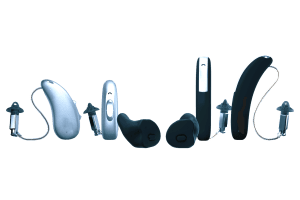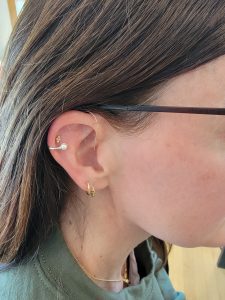Hear it Loud and Clear, A Journey into the Mechanics!
Hearing Aid Parts – All there is to Know!
EHow Hearing Aids Rock Your World
Aging is a journey (says me, an almost 28-year-old)! So… I may not really understand how it feels to be an older adult or senior, but I do see many people in many different walks of life come through our doors at Hears to U, Hearing & Hearables. I appreciate listening and learning from everyone I meet and especially from an older population. Whether stories from years past, ailments from today, or dreams for the future there is always something to be learned from those who have lots of lived experience.
Being that I am in an audiology clinic everyday, the most common thing I hear about is… you guessed it, hearing issues! Hearing loss is a common side effect of aging for many people. Although hearing loss can occur at any age, the majority of hearing loss cases occur gradually over time, particularly as people age. Age-related hearing loss, known as presbycusis, is a common condition that typically begins to manifest around the age of 60 or older, but recent research shows that it can begin as early as 40.
Prevalence of Hearing Loss
In the United States, the National Institute on Deafness and Other Communication Disorders (NIDCD) reports that approximately 30% of adults between the ages of 65 and 74 have hearing loss, and the prevalence rises to about 50% in those aged 75 and older.
Although hearing loss can be a natural part of the aging process, it is still a difficult condition for many to manage. Some people might not think they need any help or that their life is not being affected by hearing loss. But in all reality, it is affecting their life and especially those that spend time with them. This is when hearing aids (hopefully) enter the picture!
Hearing aids have come a long way and made many technological advancements, especially in recent years. These small yet powerful devices have revolutionized the lives of millions. Allowing them to reconnect and enjoy sounds they may have not heard in years. Although hearing aids have a lot to offer, it is still important to remember that they are aids. Yes, they do help you hear better, but they will never restore your hearing or cure hearing loss.
Understanding how hearing aids work will help wearers understand what their realistic expectations should be and how they can best utilize their hearing aids for different listening situations. To understand how hearing aids work, we first must understand the important components that make up a hearing aid:
Hearing Aid Parts:
Microphone:
The microphone is a fundamental component of a hearing aid. Its purpose is to capture and convert the surrounding sounds into electrical signals. The microphone ensures that the sounds you encounter are effectively collected and processed. This lays the groundwork for the subsequent steps in the hearing aid’s operation.
Amplifier:
Once the microphone captures the sounds, the amplifier steps in to enhance and boost the electrical signals. The amplifier’s primary function is to make the sounds audible and clear. It amplifies the weak signals to a level suitable for your hearing needs. Ensuring that you can perceive sounds at comfortable volumes.
Digital Signal Processor (DSP):
The digital signal processor is the technological powerhouse within a hearing aid. It processes and fine-tunes the amplified signals according to your unique hearing requirements. It employs sophisticated algorithms to distinguish between different frequencies and filter out background noise, ideally prioritizing the sounds you want to hear.
Receiver (Speaker):
After the signals have been processed, the receiver, also known as the speaker, takes over. It converts the electrical signals back into acoustic sounds, delivering them directly into your ear canal. The receiver ensures that the sounds reach your ears accurately and with optimal clarity.
Battery:
Hearing aids rely on a power source, usually a small traditional battery or rechargeable lithium-ion battery, to function effectively. Modern hearing aids utilize advanced energy-saving technologies to prolong battery life, ensuring extended usage without frequent replacements.
Customizable Features:
Hearing aids today offer an array of customizable features to suit individual preferences. Almost all models have a downloadable app to accompany the aids that allows for adjustments in volume, noise reduction, directional focus, and even connectivity to other devices such as smartphones or televisions.
Hearing aids these days include advanced technology and features to offer users customizable, high-quality hearing help. Although they will not restore hearing back to what it once was, it does allow users to experience many of the rich sounds of life that were once lost as well as communicate more effectively with those that they love.




